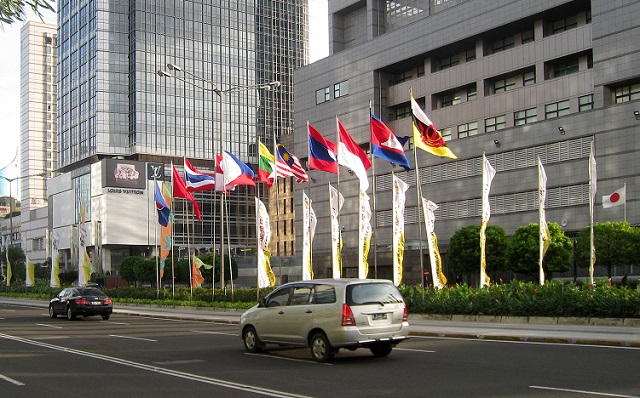
A former Secretary-General of ASEAN, Ong Keng Yong, says ASEAN could create a special category of partnership just for Australia and New Zealand.
Ong says Australia and New Zealand are so important to ASEAN’s Community project that the Association could refashion its structure.
The former Singaporean diplomat thinks my design for a 10 year effort to get Australia and New Zealand half-in as ASEAN members is too constrained by the existing configuration of ASEAN relationships.
Better, he thinks, to come up with fresh forms to reflect the mutual importance of ASEAN, Australia and New Zealand.
The interview with Ong is part of a series of columns on membership of ASEAN for Australia and New Zealand.
My proposition is that Australia should aim for half-in status as a member of ASEAN by 2024—the 50th anniversary of Australia becoming ASEAN’s first national dialogue partner.
If we want it, the Kiwis will too. So it’s an Oz–Kiwi vision. The half-in step would be for Australia and New Zealand to seek the ASEAN Observer status now held by Timor Leste and Papua New Guinea.
Ong thinks the Observer idea doesn’t capture the size of the change nor of coming challenges. He says Australia, New Zealand and the Association need to think beyond the existing ASEAN arrangements.
Dialogue partner already trumps Observer status, he says. Time to create something new to step beyond the Dialogue partnership—not a sideways step to the Observer platform.
Ong: We should not look at this issue purely in the traditional way of the meaning of being a member in the regional grouping. ASEAN and Australia, we are already Dialogue partner. And during my time as ASEAN Secretary-General I have actually asked: How do we go one step further? From Dialogue partner, what is the next level cooperation of association with each other? This is something the ASEAN countries will have to deliberate.
Ong served as the Secretary-General of ASEAN from 2003 to 2007, was Singapore’s High Commissioner to Malaysia until 2014 and is now Executive Deputy Chairman of Singapore’s S.Rajaratnam School of International Studies.
He echoes the analysis of another former ASEAN Secretary-General, Rodolfo Severino, on what would be the ‘No’ case against Australia and New Zealand joining ASEAN.
As Ong summarises, the two ‘important constraints’ are ASEAN’S geographic definition of Southeast Asia and the identity and values expressed by ASEAN.
Unlike Severino, though, Ong says there are persuasive counter arguments on the need for Australia and New Zealand to get closer to the ASEAN Community.
Speaking as a Singaporean, he thinks Oz–Kiwi membership of the Association is ‘not impossible’; that reflects my view that if Australia and New Zealand got serious and started making the case, Singapore would be their strongest supporter within ASEAN. (See the ‘Yes’ case offered from a Singaporean perspective.)
Ong says ASEAN’s own interests offer many reasons to get together with Australia and New Zealand, to make the partnership more substantiative and more integrated. He says a sideways shift from Dialogue partner to Observer status as part of a half-in strategy wouldn’t deliver on more substance and greater integration:
Ong: If you look at the future in terms of trade, people to people exchanges, even politics and security—maritime security—increasingly it is almost impossible to separate Australia and New Zealand from our future. So how do we develop a so-called half-in-half-out kind of status for Australia? It should not be Observer. In our scheme of things, Dialogue partner is higher than Observer. So I think we need to study this. And in the last few years Australia’s relations with individual ASEAN countries have become even more intensified and solidified. So we can find something.
Ong says creating a new and higher form of ASEAN relationship for Australia and New Zealand would help sidestep the geographic argument about not being part of Southeast Asia.
Ong: What kind of vocabulary can we develop to bring a dialogue partner like Australia to a more elevated level which signifies we can have a more substantive connection, a more substantive integration?
The idea is to shift beyond Dialogue Partner to a higher form of partnership for Australia and New Zealand. How to describe this shift?
The descriptor would be a new category of partner-cum-member. A partner with member rights. My suggestion, based on Ong’s idea, would be for Australia and New Zealand to become ASEAN Community Partners
More on that in the next post.

